The perfect arepa is super-crunchy on the outside, with a soft, creamy interior (not pillowy or fluffy as often described). You’ll go astray if you try to cook arepas through like wheat flatbread. On the other hand, you don’t want the interior to be wet. The magic is in a balance between crunchy exterior and creamy interior.
True confession: Until two weeks ago, I had never heard of an arepa. And I certainly couldn’t pronounce it. Now this is weird, because entire shelves of my cookbook library are dedicated to the cuisines of Mexico, South America, the Caribbean, Cuba, and the American Southwest. (This girl can make a mean tortilla and even meaner tamale–yes, she can.) You would think that somewhere in all that reading and cooking, I would have encountered the crusty little Venezuelan or Columbian cornmeal cake called an arepa. But no, didn’t happen.
Instead, I stumbled onto the concept on the web, while doing research for this Mexican Chorizo post. I envisioned a cornmeal bun to wrap a chorizo slider. So I started looking around for cornmeal buns. That’s when I ran into arepas. Writer after writer claim that they make fine wrappers for sautéed chorizo (and just about anything else you can devise to put into or on top of them). This, I had to experience.
What threw me initially is that arepas are not like any sandwich wrapper I have experienced. I mean, shouldn’t a sandwich wrapper be cooked all the way through? And to complicate matters, I found photos of arepas on the web that look like fluffy hamburger buns.
However, as much as I tried, fluffy and cooked through are not possible with a traditional arepa recipe. You can double the cooking time for the latter, but you will end up with a cornmeal hockey puck, not a sandwich wrapper. Don’t ask how I know this.
So, I did a bit more research. Okay, a lot more research (see extensive list of resources below). And then several rounds of testing various formulations in the OtherWorldly Kitchen.
Thus, I can tell you with some confidence that the perfect arepa is super-crunchy on the outside, with a soft, creamy interior (not pillowy or fluffy as often described). You’ll go astray if you try to cook arepas through like wheat flatbread. On the other hand, you don’t want the interior to be wet. The magic is in a balance between crunchy exterior and creamy interior.
Nevertheless, although arepas are easy and quick to make, finding the flour is not. You need difficult-to-find masa arepa. The easy-to-find masa harina will not do. As the Olympic Peninsula (where I am happily residing for the summer) is not known for its specialty food shops, I ordered mine online. If you live in a Big City, you should be able to find masa arepa (pre-cooked, white corn meal) at an Hispanic market. In Washington and Oregon, Uwajimaya carries it as well. Recommended brands include P.A.N., Goya, and Iberia.
Here are some of the things I learned over the past two weeks about making arepas. Although the concept is easy, there are many ways to go wrong. If you are new to arepas, these tips and tricks will shorten your learning curve.
Arepa Tips & Tricks
- Use precooked, white (blanco) cornmeal (labeled harina, harina precocida, or masarepas), imported from Venezuela or Columbia.
- The most popular brand of precooked cornmeal is P.A.N., found at Latino markets or online at www.amigofoods.com.
- American cornmeal, corn flour, or Mexican masa harina will not produce the traditional arepa texture and taste.
- Pour HOT liquid into a bowl and then sprinkle the arepa flour on slowly while stirring. Hot liquid hydrates faster and better than cold liquid.
- The initial arepa dough should be on the wet side.
- After incorporating the water and flour, allow the arepa dough to sit for 15-30 minutes to absorb the water fully.
- Arepa dough should be the consistency of leftover mashed potatoes, very pliable and soft, without sticking to your hands.
- If the arepa dough is too dry, the edges of the arepas will crack when you form the disks. To remedy, simply add a little more liquid to the dough and knead it in.
- Although traditional recipes call for nothing beyond arepa flour, water, and perhaps a little salt, melted butter, cheese, milk or stock, or sugar can also be added.
- If incorporating melted better into the arepa dough, use anywhere from 1 to 8 tablespoons per cup of arepa flour.
- If incorporating cheese into the arepa dough, use a cheese with a relatively high melting point, such as cotija, feta, Pecorino-Romano, or Parmigiano-Reggiano, and use up to 2 ounces of grated cheese per cup of arepa flour.
- Water is the traditional liquid for arepas, but stock or milk can be substituted.
- Arepas can also be sweet. Dissolve 2-6 tablespoons sugar per cup of arepa flour in the hot liquid before adding the arepa flour. Sugar can be white or brown.
- You might also try adding 1 cup of pureed corn per cup of arepa flour to the dough.
- Arepas are typically shaped into ¼- to ¾-inch thick disks.
- Cook arepas slowly on the stovetop to evaporate moisture from the interior as the exterior slowly browns. Depending on thickness, this could require 15-20 minutes.
- Alternatively, brown thicker arepas in a sauté pan and then finish in the oven. Try cooking 5 minutes on each side and then 10 minutes in a 350° oven.
- A brown crust is lovely, but the important thing is a FIRM crust, regardless of color. If the crust is not firm enough when you transfer the arepas to the rack of the oven, the dough may fall through the wires of the rack. And I speak from experience here.
- Rather than put browned arepas directly onto the rack of a hot oven (and risk them falling through the wires of the rack), you might prefer to play it safe and place them on a baking sheet.
- Rather than the traditional stovetop cooking method, you might also want to try frying thin arepas in a couple inches of 350° vegetable oil for 3-4 minutes, turning once, or until golden. This method is especially delicious with sweet arepas.
How to Eat Arepas
- To enjoy their maximum goodness, arepas should always be eaten freshly made and hot. They become very dense as they cool. (However, I have toasted leftover, split arepas with good results.)
- Arepas are finger food; no fork necessary.
- Make them small and use as a base for an appetizer, loading them with sautéed chorizo and black beans, homemade salsa, crumbled cotija, and a drizzle of sour cream (pictured).
- Spread with butter or top with grated cheese, and serve warm for breakfast.
- Split and use as a sandwich wrapper.
- Toast and slather with butter and cinnamon sugar.
- Serve plain with Green Mojo Sauce (aioli made with cilantro and lime juice).
- Sandwich two thin arepas with a slice of melting cheese and cook on an oiled griddle until the cheese melts.
And now, let’s make two arepas at opposite ends of the spectrum: one traditional and one with fresh corn.
Buttery Arepas
This is my favorite arepa recipe thus far. Chef Douglas Rodriguez uses a full ½ cup of butter in his arepas (as featured in Latin Flavors on the Grill). My vote is for the full amount of butter. But half that amount produces good results as well.
1 cup water, brought to a boil
4-8 tablespoons unsalted butter, soft room temperature
¾ teaspoon fine sea salt
1 cup pre-cooked, dehydrated white cornmeal (P.A.N. brand from Columbia is good, or try Goya or Areparina brands)
Optional:
2 ounces crumbled cotija cheese (about ½ cup)
vegetable oil, for the griddle
- Pour boiling water into a medium mixing bowl. Add the butter and salt, and stir to incorporate. The butter should melt on contact with the boiling water. Let cool for about 2 minutes. Water should still be hot though.
- Slowly pour the arepa flour on top of the water, mixing with your fingers. (Yes, you really must use your hands here.)
- Mix in the cheese if using.
- Knead the dough until pliable and smooth, about 2 minutes. The dough should feel wonderful–something like leftover mashed potatoes. If it is too wet, incorporate a little more arepa flour. If too dry, incorporate a little more water. You will end up with about 14 ounces of dough (without the cheese).
- Put dough into a mixing bowl, cover with plastic wrap, and let rest for at least 30 minutes.
- Shape dough into seven, 2-ounce balls, about the size of golf balls, and then flatten into disks using one of these methods:
- Traditional Shaping Technique: Using the palms of your hands (not your fingers), flatten each ball of dough from the center outward, to achieve an even ¼- to ½-inch thickness from center to edge. There should be no cracks at the edges. If there are, pinch and smooth with your fingers. Arepas will be 2½- to 3½-inches in diameter.
- Not So Traditional Shaping Technique: After shaping the balls of dough to ½-inch thickness with your hands, lay each on a cutting board and cut with a 2½-inch biscuit cutter. Reshape the trimmings and cut additional arepas until all dough is used.
- Now, you can cook straight away (preferred), or arrange on a baking sheet and cover with plastic wrap until you are ready. If you must wait more than 30 minutes, refrigerate.
- To cook, lightly oil a griddle (preferably non-stick) and set over medium-low heat, arrange arepas on hot griddle, and cook for 8-10 minutes on each side (depending on thickness), turning only once. You must moderate the heat so that the arepas do not overbrown while the center is cooking through.
- Alternatively, preheat the oven to 350°, cook the arepas for only 5 minutes per side on the stovetop, until browned with a crisp crust, and then transfer to a cookie sheet to finish cooking for 15-20 minutes in the oven.
- Remove from the griddle or oven. Serve whole or cut. To cut, with a serrated bread knife, carefully cut through the center with a gentle sawing motion, as though for English muffins, and serve hot.
Makes 14-ounces dough; or seven, 3- to 3½-inch diameter, arepas.
Fresh Corn and Cotija Arepas
Why settle for one arepas recipe when there are a zillion variations? This rendition packs a corny wallop and enlists milk for tenderness, rather than the more usual water.
1 cup fresh or frozen, thawed corn kernels
2 ounces crumbled cotija cheese
1 cup milk
4 tablespoons unsalted butter, soft room temperature
½ teaspoon fine sea salt
1 cup pre-cooked, dehydrated white cornmeal, plus 1-3 tablespoons as needed (P.A.N. brand from Columbia is good, or try Goya or Areparina brands)
- Follow the Master Recipe with the following revisions.
- Add 1 cup fresh or frozen, thawed corn kernels and 2 ounces (about ½ cup) crumbled cotija cheese to a processor fitted with the steel blade. Pulse to puree.
- At Step 1, use milk instead of water, decrease salt to ½ teaspoon, and add the corn mixture.
- At Step 2, increase arepa flour by 1-3 tablespoons, as necessary to achieve a workable dough.
- Proceed with the Master Recipe.
Makes 24-ounces dough; or twelve, 3- to 3½-inch diameter, arepas.
Resources
- A Bread a Day: Arepas (NYT recipe)
- Adrian Lopez Blog: History of the Arepa
- Amazon: P.A.N. Harina Blanca (pre-cooked white corn meal)
- Andrea Meyers: Columbian Arepas with Cheese & Aji (traditional, with cheese, no oil)
- Answers.com: Arepa
- Batter Junkie: Arepas Venezolanas
- Bay Area Bites: Arepas: Homemade Flatbreads
- Cookstr: Arepas (traditional, with cheese, no oil)
- Epicurious: Columbian Arepas (traditional, with cheese, no oil))
- Everything Bread: Arepas
- Food Network: Throwdown Challenge: Arepas (video)
- Food Wishes: How to Make Arepas (traditional)
- Heather Homemade: Reina Pepiada Arepas (traditional)
- Hispanic Kitchen: Ahhhhh…Arepas
- Huffington Post: How to Make and Stuff Arepas (traditional)
- Muy Bueno: Turkey Arepas (with masa harina and cream cheese rather than arepas flour)
- My Kitchen Movement: The Best Venezuelan Sandwich Ever (traditional)
- NBC Latino: Making the Perfect Arepa (with ricotta)
- On and Off My Plate: Spicy Machaca Arepa
- Serious Eats: Latin American Cuisine: Columbian Arepas
- Strawberry Pepper: Venezuelan Stuffed Arepas (traditional)
- Sweet Bites: Arepas Dulces: Sweet Venezuelan Filled Corn Cakes (slightly sweet, deep fried)
- The New York Times: Arepas with Cheese and Corn (uses cornmeal and whole corn rather than arepa flour)
- The New York Times: The Minimalist: Arepas (video)
- WikiHow: How to Cook Arepas
- Wikipedia: Arepa
I Love Hearing from You!
If you have read this far, please leave a comment. Include your blog URL and CommentLuv will automatically link back to your most recent blog post. Let’s get cooking! …Susan
Copyright 2011 Susan S. Bradley. All rights reserved.

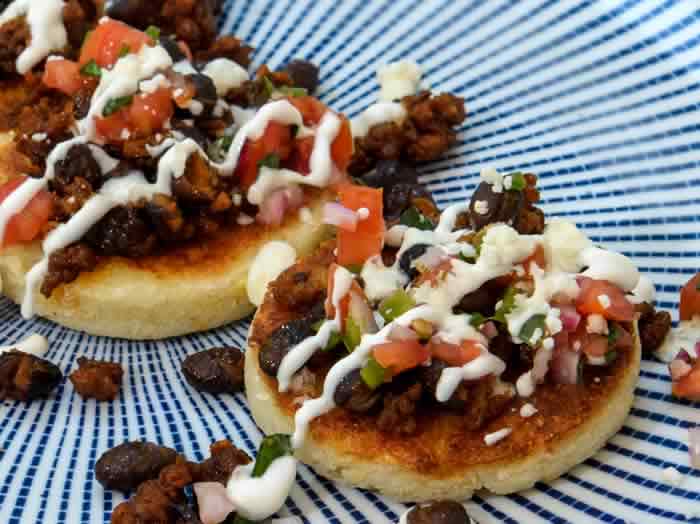
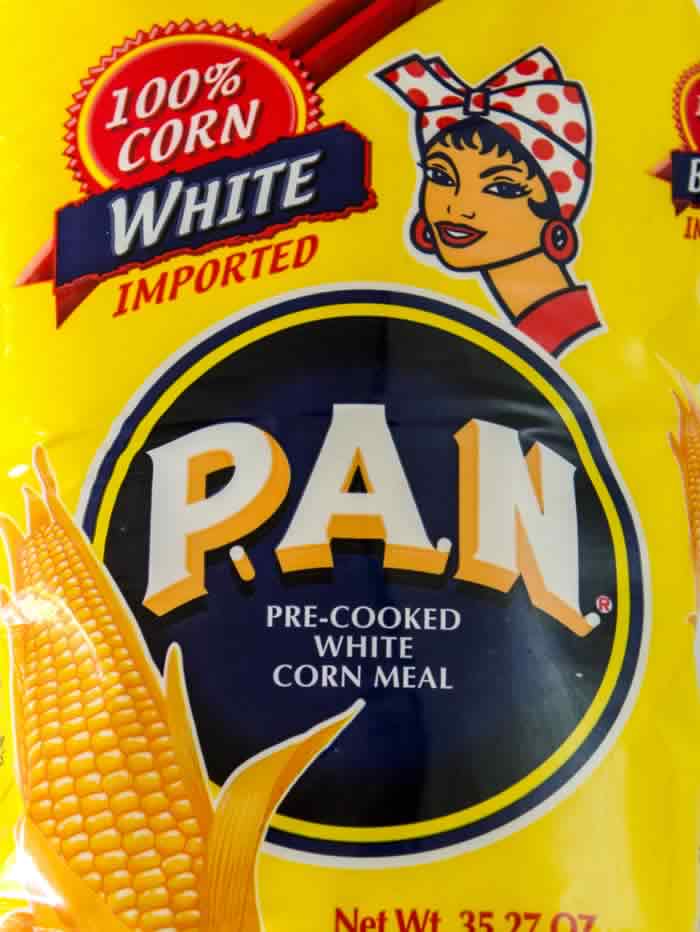
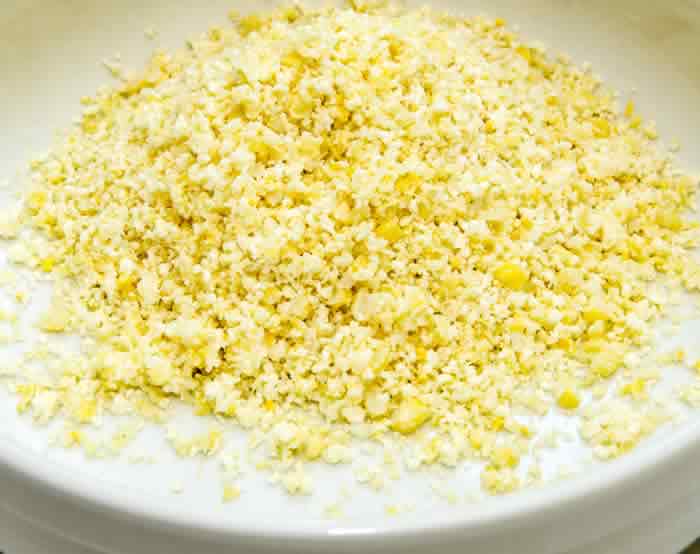
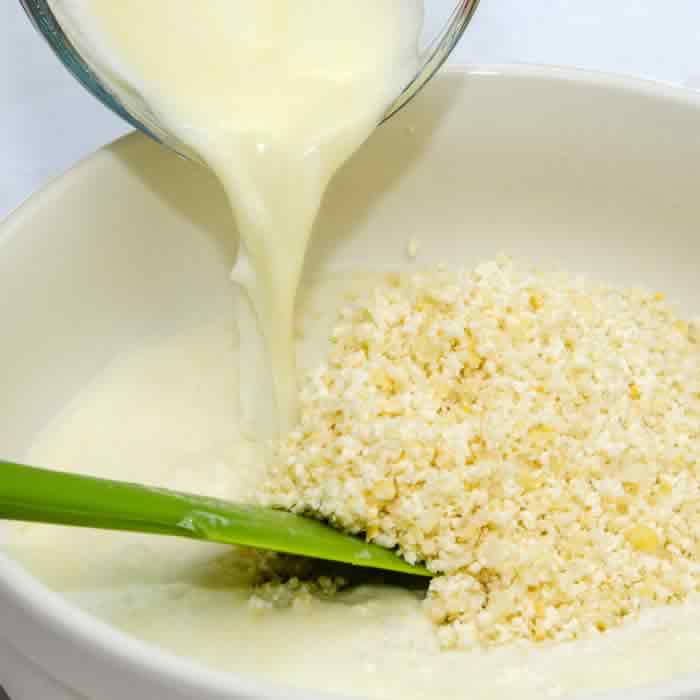
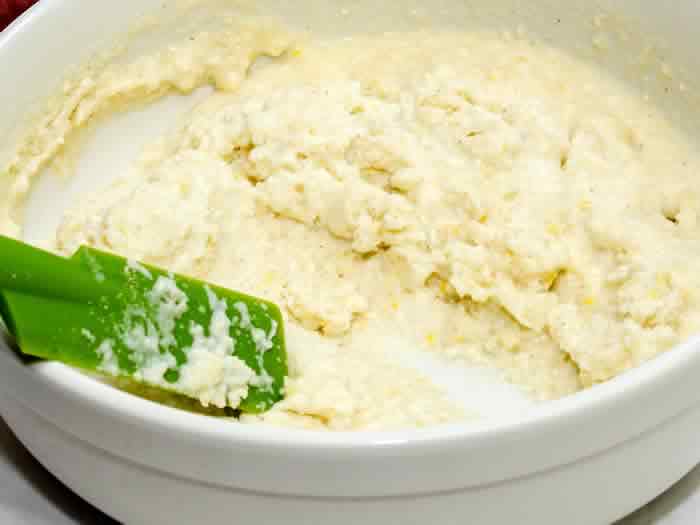
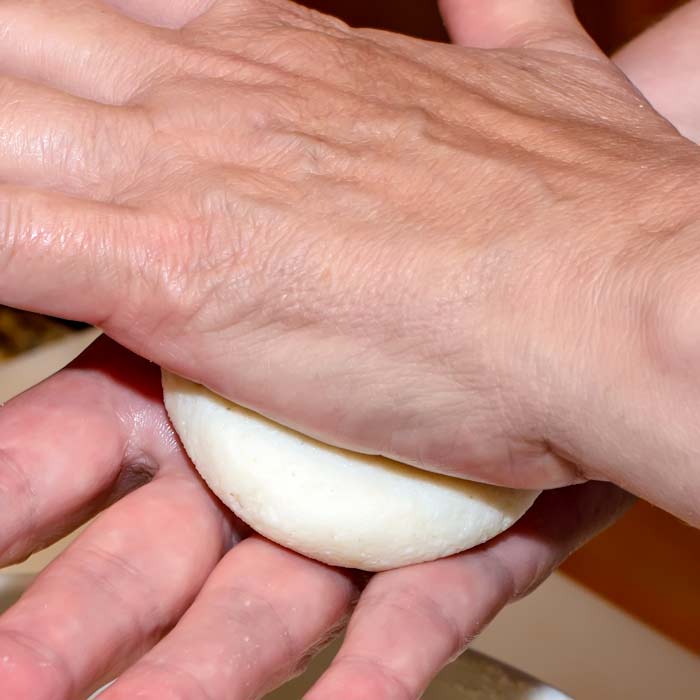
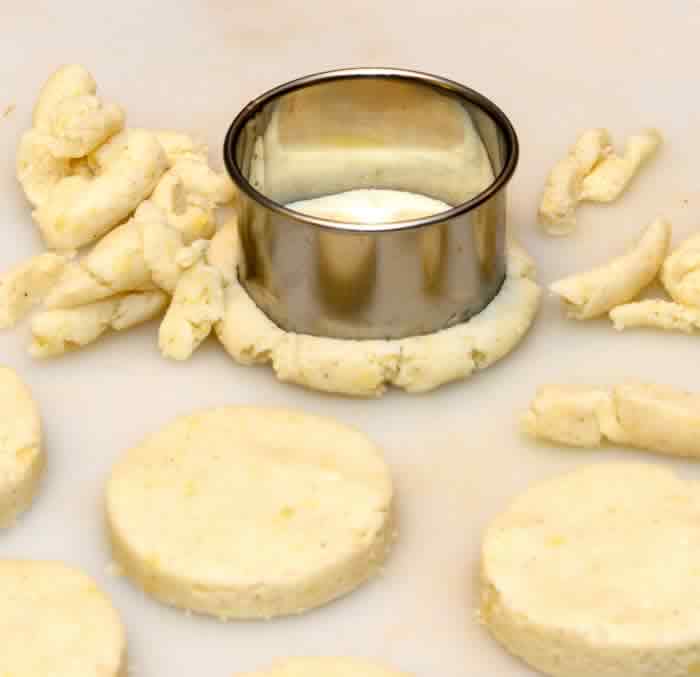
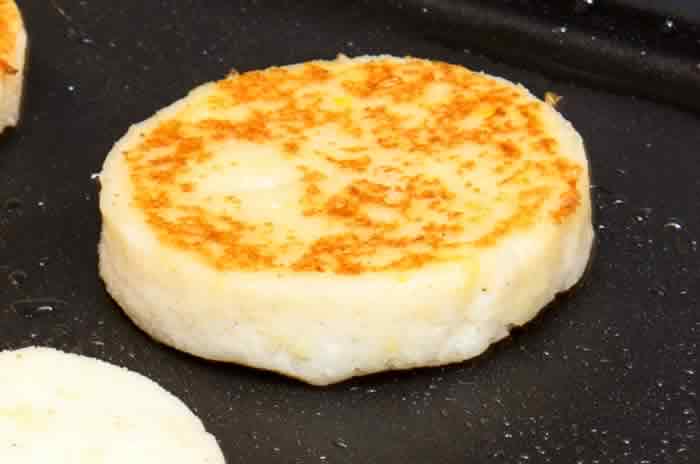
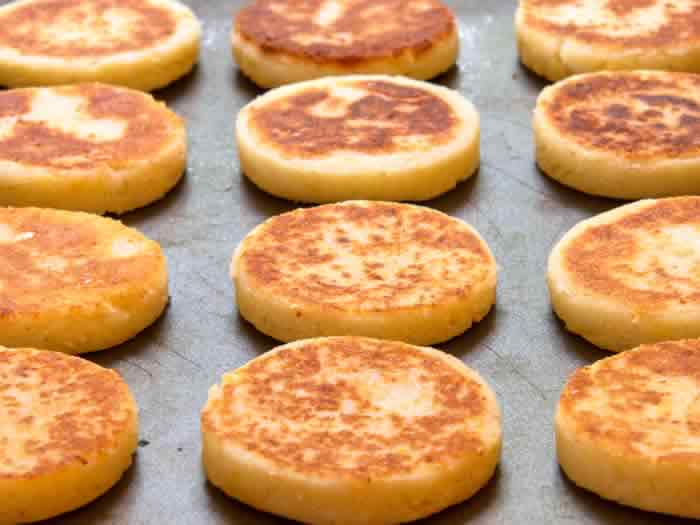
I started eating arepa’s 45 years ago when I lived in Colombia, they’re a favorite of mine. Pupusa’s are the Central America name for arepa’s but they’re made with lard.
Henry, I’m surprised it took me so long to “discover” them. In Portland we have food carts specializing in them. Even New Season’s market makes them to order in their deli. So delicious.
I think I’ll try this……nothing like warm, toasty, corn.
I love this one, looks simple and easy to make
Thanks for this recipe..I had arepas a few months ago and really enjoy them. It will be fun to try making them myself!
I have only heard about Arepas when I transferred to the East Coast but sadly haven’t tasted it yet. Now that I see how delicious it looks, I know I should try it soon! Pinned, too.
I love these! They remind me of sopes and are such a great vehicle for ANY type of topping. Thanks for the recipe!
Oh my I love me some arepas, brings back lovely memories!
How very interesting! I live in the SW, can’t believe I haven’t heard of these! Thanks for the tips, I’ll have to give them a try!
I write a column for Clean Eating magazine called Global Kitchen and just turned in a column featuring arepas! It’ll run in the July/August issue.
I learned about arepas from a local restaurant in SF called Pica Pica. I second all you say about making them at home, although I did have success making a filled version, using the arepa like a pita pocket. I put leftover arepas in the freezer–we’ll see how that works out, but it seemed better than letting them get stale.
Anyway, thanks for this great article! Happy cooking!
This looks like a recipe I will ACTUALLY make! My family loves cornbread so I think they would love these! #laceyslegacy
Looks delicious I was planning to make Arepas for long time, your recipe is perfect, Pinning and tweeting.
This is amazing! I was just researching for an appetizer class I’m giving and saw arepas and began looking, and here my good friend and teacher has already done the work for me. Thanks so much Susan. I’m going to make them today.
Just wanted to let you know I just bought some P.A.N. at my local Safeway in Washington State and found you looking for recipes since there isn’t a single one on the package. Keep on cookin’ ~ Shannon
A year or so ago, we went to the hole-in-the-wall Venezualan joint featured in Diners, Drive-Ins etc. It’s in Norwalk, Conn. Six tables tops! MUCH waiting due to TV notoriety. We had arepas with savory meat fillings. Fantastic! Our local supermarket even sells pre-cooked, mass-produced arepas. Haven’t tried em yet though.
Gumby, that sounds fantastic, thanks for sharing. I’m back in Portland this week and will see if the new South American restaurant has arepas on the menu. Would love to try them in a few restaurants.
I’ve heard of Arepas from the show Food Network. It’s on my ‘to do list’. Photos and tips are helpful. Will bookmark…
Carmen